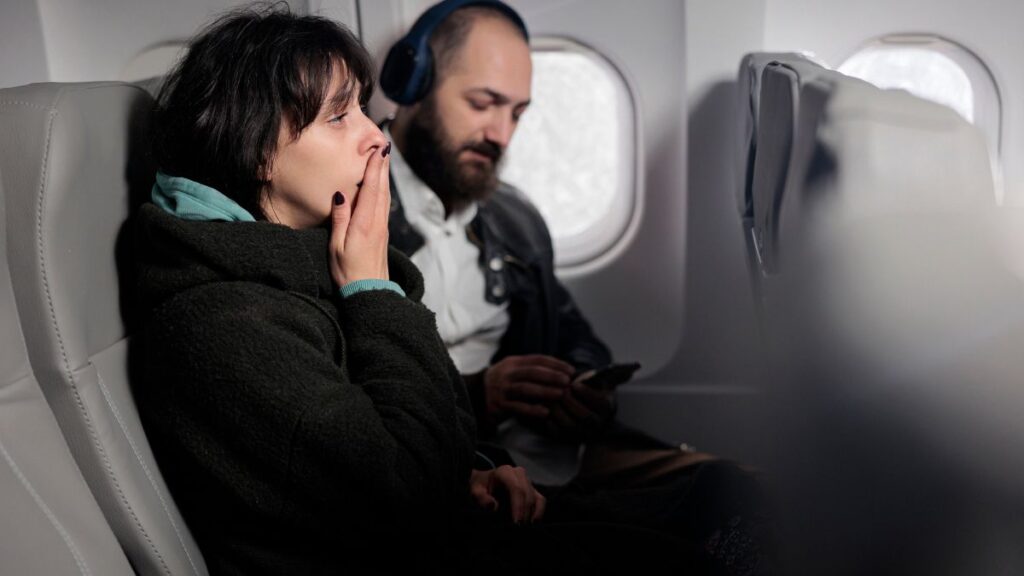When the wheels of Delta Flight DL275 touched down unexpectedly at Los Angeles International Airport, a wave of confusion swept through the cabin. Passengers were left wondering what had gone wrong and why their journey to Japan had taken such an unexpected turn. As stories emerged from those aboard, it became clear that this was more than just a flight diversion; it was an unforgettable experience filled with anxiety, camaraderie, and even humor amidst uncertainty. Join us as we dive into the events surrounding Delta Flight DL275’s diversion to LAX—exploring firsthand accounts from passengers, crew reactions, and how social media played a role in amplifying the story across the globe.
What happened on Delta Flight DL275 Diverted Lax?
Delta Flight DL275 had just taken off from Los Angeles, bound for Tokyo. Passengers settled in for the long haul when suddenly, everything changed.
Mid-flight, an alert signaled a potential issue with one of the aircraft’s engines. The pilot made the decision to divert back to LAX as a precautionary measure. Safety always comes first.
As the plane turned around, passengers exchanged worried glances and whispered questions filled the cabin. What was happening? Were they safe?
The flight crew quickly reassured everyone while preparing for landing procedures. Communication was crucial during this tense time.
Touching down at LAX brought relief but also uncertainty about what lay ahead—rescheduled flights or unexpected delays were on their minds as they awaited further instructions from Delta Airlines staff.
How did passengers and crew react to the diversion?
As Delta Flight DL275 approached Los Angeles, tension filled the cabin when an unexpected diversion was announced. Some passengers exchanged puzzled glances while others pulled out their phones to search for updates.
The crew remained calm and professional, reassuring everyone that safety was the priority. Their composed demeanor helped ease growing anxiety among travelers. Many appreciated the clear communication about what to expect next.
In the aisles, conversations bubbled as curious minds speculated on the reasons behind the change in course. A few passengers joked about needing extra snacks during their unplanned layover, trying to lighten the mood amid uncertainty.
Others expressed frustration over missed connections or altered plans. Despite this, a sense of solidarity emerged among those onboard as they shared stories and experiences related to air travel mishaps throughout their journeys.
Passenger stories from the Delta Flight DL275 Diverted Lax
Amid the chaos of Delta Flight DL275’s diversion, passengers found themselves sharing unexpected moments. Some took to chatting with fellow travelers, bonding over shared experiences and their collective surprise. For many, it was a chance to make new friends in an unusual setting.
One traveler recalled how they comforted a nervous child who didn’t understand why they were landing unexpectedly. A casual conversation turned into an impromptu storytelling session that eased tension in the cabin.
Others captured snippets of humor from the situation. Memorable quotes emerged as people processed the sudden change together, turning anxiety into laughter.
Social media buzzed with individual accounts; passengers documented their feelings and thoughts through posts and updates. Each story added another layer to this unusual experience—transforming frustration into camaraderie among strangers united by circumstance.
These personal narratives illustrate how adversity can spark connection in even the most trying travel situations.
The role of social media in spreading news about the diversion
Social media played a crucial role in disseminating information about Delta Flight DL275 Diverted LAX. As soon as the plane diverted, passengers began sharing their experiences in real time on platforms like Twitter and Instagram.
Tweets flew out with hashtags that quickly gained traction. Photos of the aircraft sitting on the tarmac captured attention, sparking curiosity from those not directly involved.
Passengers tweeted updates about delays and announcements made by crew members. This instant communication kept friends and family informed while also drawing interest from aviation enthusiasts monitoring flight paths.
The immediacy of social media allowed for rapid information exchange. It transformed what could have been an isolated incident into a widely discussed event across various online communities.
As users shared their stories, others joined in to provide support or express concerns, creating a collective dialogue around the unexpected situation aboard Flight DL275.
Response from Delta Airlines
Delta Airlines responded promptly to the diversion of Flight DL275, emphasizing passenger safety as their top priority. The airline issued a statement acknowledging the situation and thanking everyone for their patience during the unexpected detour.
They arranged accommodations for affected passengers at LAX and provided timely updates about rebooking and connecting flights. Delta’s customer service team was on standby, offering support through various channels such as social media, phone lines, and airport representatives.
The airline also took steps to ensure that communication remained clear throughout the ordeal. Passengers were kept informed about flight status changes in real-time via text alerts and announcements inside the terminal.
In situations like these, Delta aims to minimize disruption while maintaining transparency with its customers. Their response highlighted a commitment to both operational integrity and customer care during challenging circumstances.
Similar incidents in the past and how airlines handle diversions
Air travel can be unpredictable. Diversions are not as uncommon as one might think. Each incident presents unique challenges for airlines and passengers alike.
In 2019, a flight from New York to San Francisco was diverted due to severe weather. Passengers found themselves stranded in Denver, where the airline quickly organized accommodations and meals.
Another notable case involved an international flight that had to land unexpectedly because of a medical emergency on board. The crew acted swiftly, prioritizing passenger safety while coordinating with ground services for immediate assistance.
Airlines typically have protocols in place for handling diversions. Communication is key; keeping passengers informed helps alleviate anxiety during these unexpected situations.
Logistical support is crucial too—whether it’s arranging new flights or providing hotel stays. Airlines strive to maintain a balance between operational efficiency and customer care, ensuring that travelers feel supported through the ordeal.
Conclusion: the impact of Delta Flight DL275 Diverted Laxon passengers and airlines
The impact of Delta Flight DL275 Diverted LAX resonates beyond just the immediate inconvenience for passengers and crew. Such diversions often stir a mix of emotions, from anxiety to relief, as travelers navigate unexpected changes in their travel plans. Individual stories highlight resilience; passengers bonded over shared experiences and made new friends during an unplanned layover.
For airlines, these incidents present significant challenges but also opportunities for improvement. They must ensure clear communication and customer care in times of uncertainty. The response from Delta Airlines reflects this commitment, showing they prioritize passenger welfare even amid operational disruptions.
As social media continues to play a crucial role in disseminating information quickly, public perception can sway rapidly based on how events unfold online. The swift sharing of experiences allowed many to connect with each other while also holding airlines accountable for their service quality.
Looking at past incidents reveals patterns that airlines have learned from over time. Each diversion teaches valuable lessons about preparedness and adaptability—crucial traits in today’s fast-paced travel environment.
Passengers remember moments like those aboard Flight DL275 not only because they faced challenges but also due to the camaraderie formed during trying times. These stories contribute to the evolving narrative between travelers and airlines, shaping future expectations around air travel safety and comfort.





